If you take a boat from Venice out into the lagoon, this vast watery expanse of mud flats, islands and channels stretches as far as the eye can see. This is the realm of legends and dreams.
NAVIGATION of the lagoon is tricky, the water is shallow and you have to follow the marked channels. Over the centuries ‘briccole’ or wooden piles driven into the sandy sediment of the lagoon bed have guided boatmen safely across the water. Every Venetian knows that you have to follow the markers, if you don’t then the risk of running aground is high. The early settlers used flat-bottomed boats or skiffs to get around, either pushed with a pole, like a punt, or fitted with a small sail. The combination of mud banks, shallow water and reeds make this a perfect habitat for all types of birds. Hemingway loved to hunt duck, in the remote corners of the lagoon.
Perhaps the most atmospheric island in the lagoon is Torcello. Located close to the northern shores, Torcello once had a population of about 20,000 people. Today less than 100 live on the island, in fact it might be less than fifty. The island has an abandoned almost ghostly feel. On a cool autumn morning, with the dew thick on the ground, a labyrinth of spiders’ webs criss-crossed the pathway. The delicate filaments still in tact, heavily loaded with water droplets and completely undisturbed by visitors. A painted sign on the wall says ‘Ponte del Diavolo‘ which means Devil’s Bridge. My imagination cruises into third gear, the journey has just begun. I’ll come back to this legend last…..
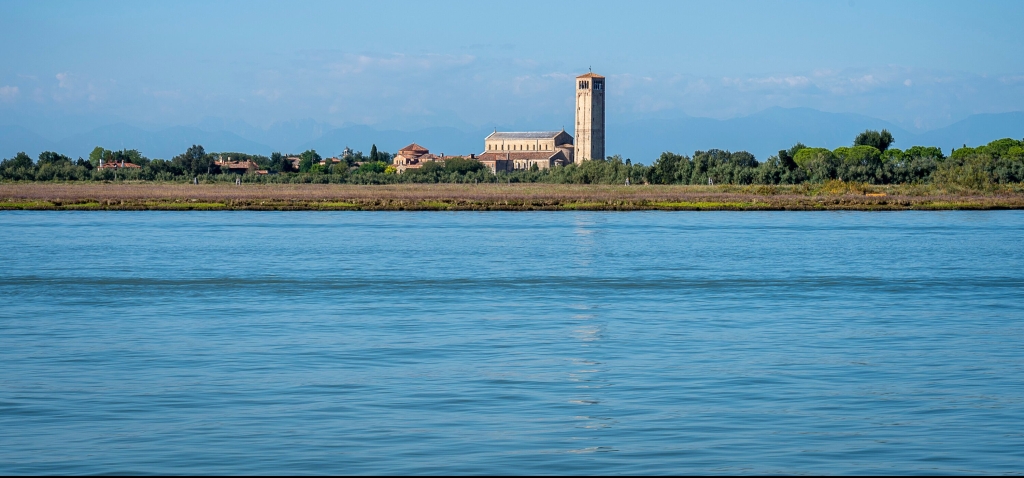

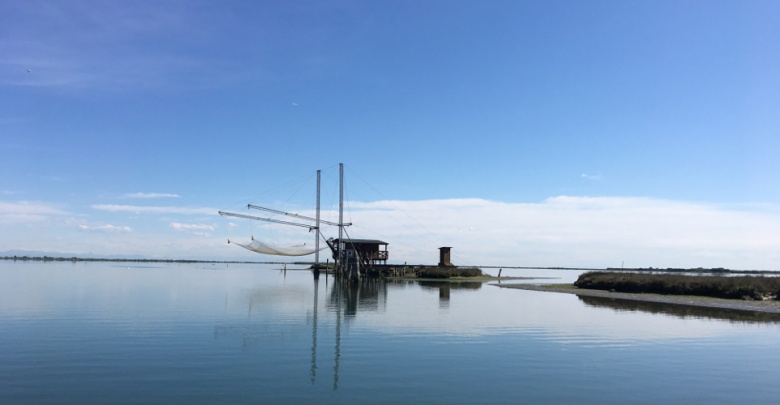
TORCELLO – Legend Number One
Torcello was a thriving port and fishing community for hundreds of years, before the development of Venice. This is absolutely true. Torcello was a port and trans-shipment point for the Roman city of Altinum. As the crow flies Altinum is just a few kilometres north of Torcello on the main land. Recent archaeological work has revealed evidence of channels and canals linking the town of Altinum and the island of Torcello. In all probability goods were taken out into the lagoon on small boats and then transferred onto bigger vessels for shipping south via the Adriatic Sea to Ancona, Dalmatia and other parts of the Roman Empire. Years ago we were taught that Torcello was the first island in the lagoon to be inhabited by mainland folks after the fall of the Roman Empire. The story was that Roman citizens fled their burning, ransacked towns as Barbarian hordes, including Attila the Hun, arrived from the east. They found safety in the watery wastes of the lagoon. This is actually not completely true. Torcello was already a port for the thriving Roman town of Altinum and certainly pre-dated the Roman city. The Veneti people, from whom the Veneto region gets its name were around, farming and fishing for generations, millenia even, long before the arrival of the Romans.
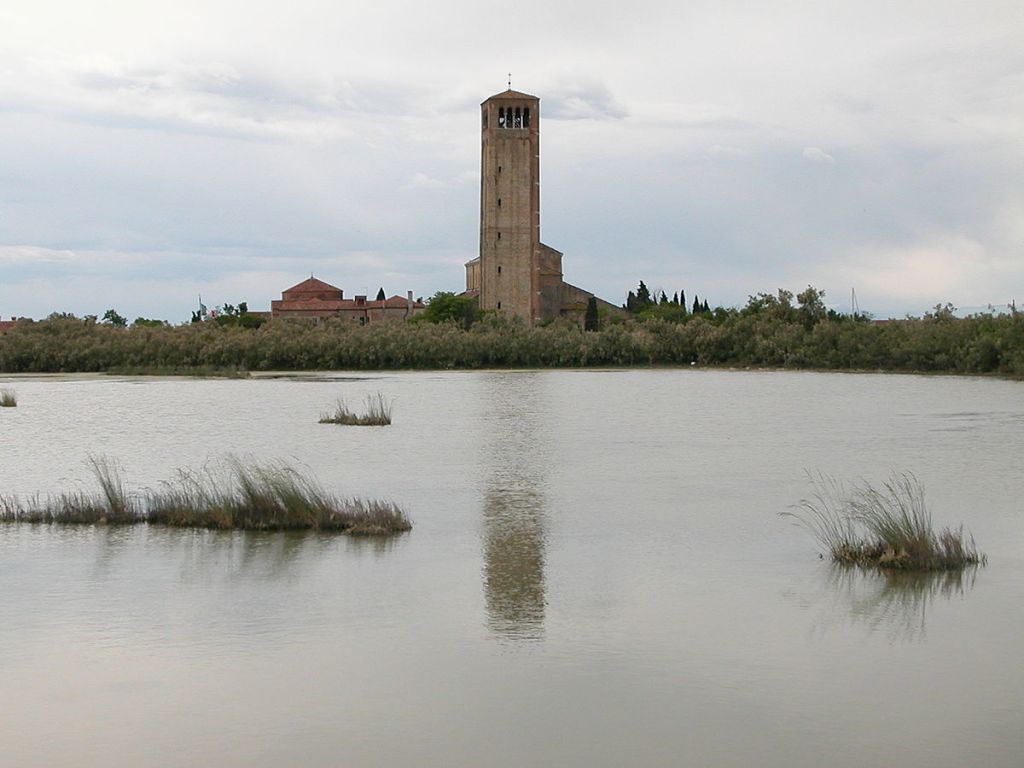
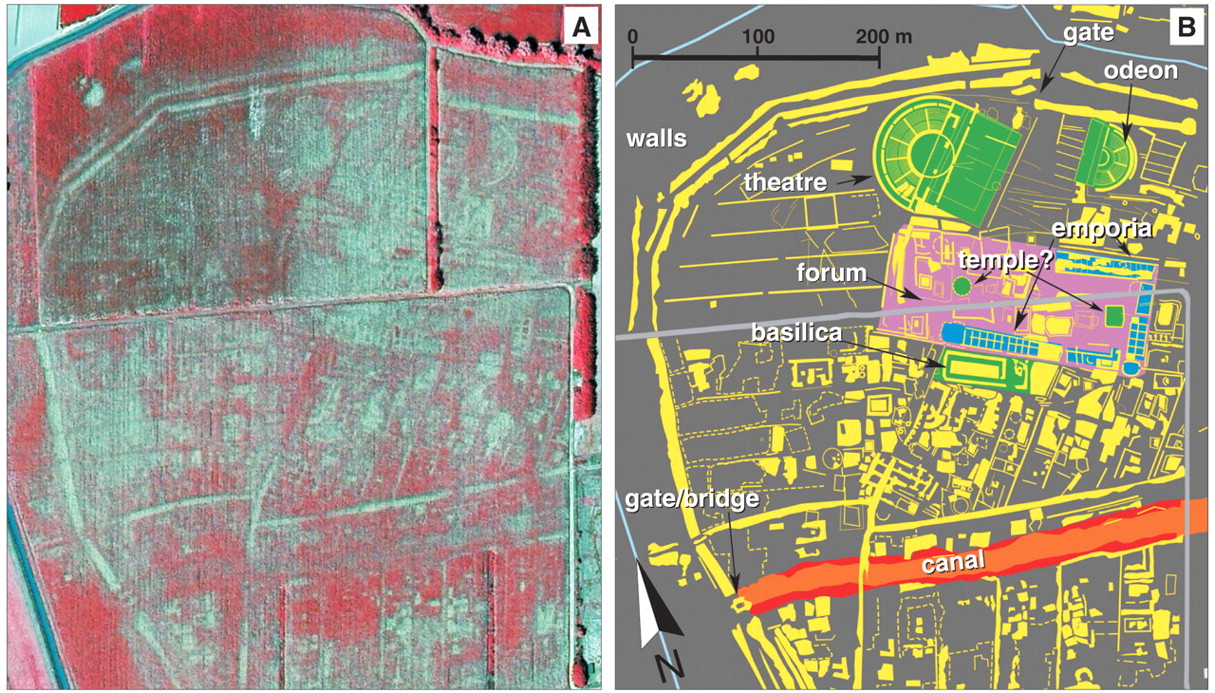
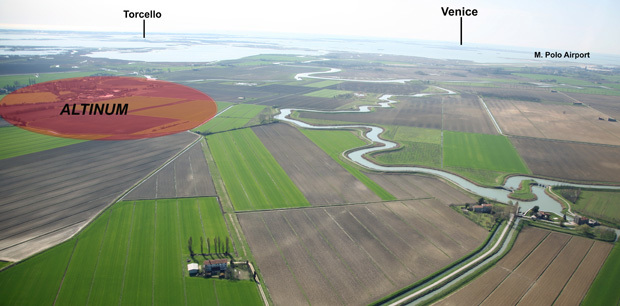
TORCELLO – Legend Number Two
The stone chair or throne that now sits in the grassy, overgrown piazza of Torcello was allegedly the throne of Attila the Hun. Attila was a tribal chief famous for his brutality and aggressive military campaigns. He is notorious in Italy for his role in finally bringing to an end the Roman Empire. There is no evidence to support the story that Attila ever visited Torcello or sat on this throne. However this doesn’t deter the hordes of Italian school children who come to Torcello on school trips and take it in turns to sit on the throne and take a selfie. The photo below shows the delightful Emily, my nephew’s girlfriend doing the tourist thing on the ‘throne of Atilla’.
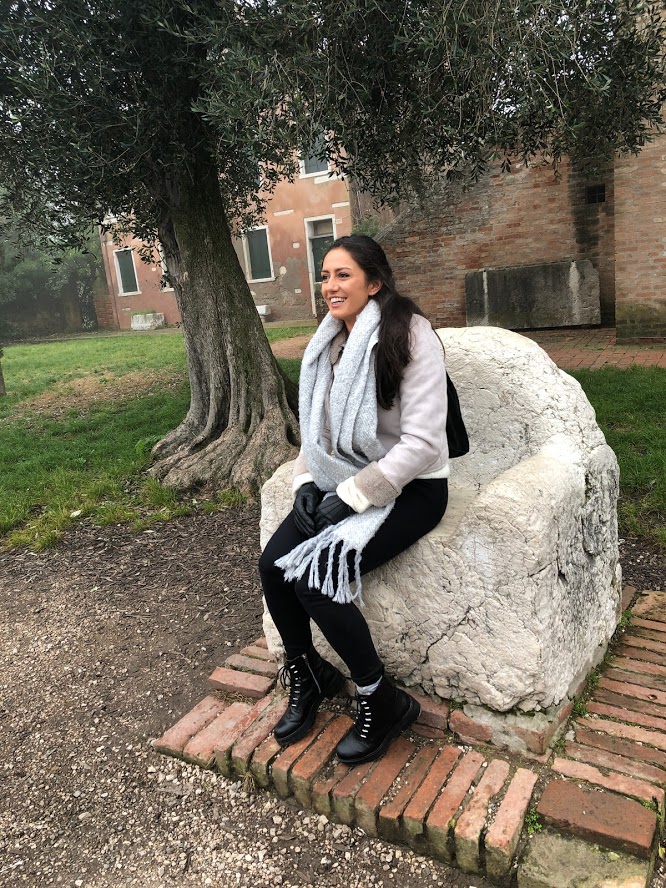
TORCELLO – Legend Number Three
The beautiful and elegant ‘Locanda Cipriani’ is a traditional inn that was opened by Giuseppe Cipriani in 1934. Still run by the same family the ‘Locanda’ has looked after countless celebrities, politicians, film stars and artists over the years. It is famed for its beautiful gardens, fabulous food and a delightfully discreet ambiance. There are a few bedrooms above the restaurant. Ernest Hemingway stayed here in 1948 and wrote his novel ‘Across the river and into the trees‘ during his month long residence. He found the peace and tranquility of the island ideal for writing. He had a particular chair by the open fire and a bottle of his very own ‘liquor’ behind the bar. Just outside the inn there is a small canal, with moorings for boats. Hemingway’s boatman would wait here for the writer to emerge for his daily duck hunting excursions. All of this is true.
The ‘locanda’ has entertained the rich and famous for decades. Charlie Chaplin, The Queen, Margaret Thatcher, Prince Charles and Lady Diana, Maria Callas and Paul Newman have all visited. During the Venice Film Festival there’s a stream of sleek water taxis waiting for the latest Hollywood stars to finish their lunch. There’s even a small water colour hanging on the wall that was done by Winston Churchill during a visit in the 1950s!! I wonder if Giuseppe Cipriani realised that he was creating a legend when he bought the old inn back in the 30s. In recent years the ‘locanda’ has hosted some wonderful weddings – I’ve included a short video produced by Locanda Cipriani at the end of this article. It captures beautifully the charm and tranquility of the island of Torcello and its idyllic garden setting…………….
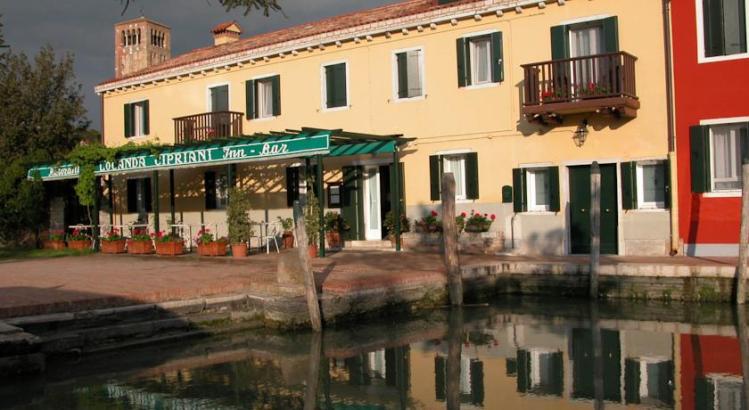
Whenever I come to this island I am enchanted, captivated even, by its sense of history. I follow the red brick road from the jetty towards the piazza, like Dorothy in ‘The Wizard of Oz’ and each time I see a rather strange sign painted on the wall. The sign says`Ponte del Diavolo‘. It’s Legend Number Four on my list.
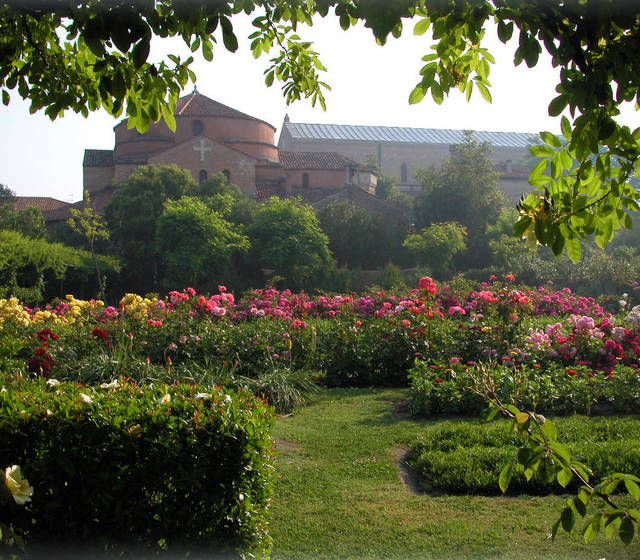
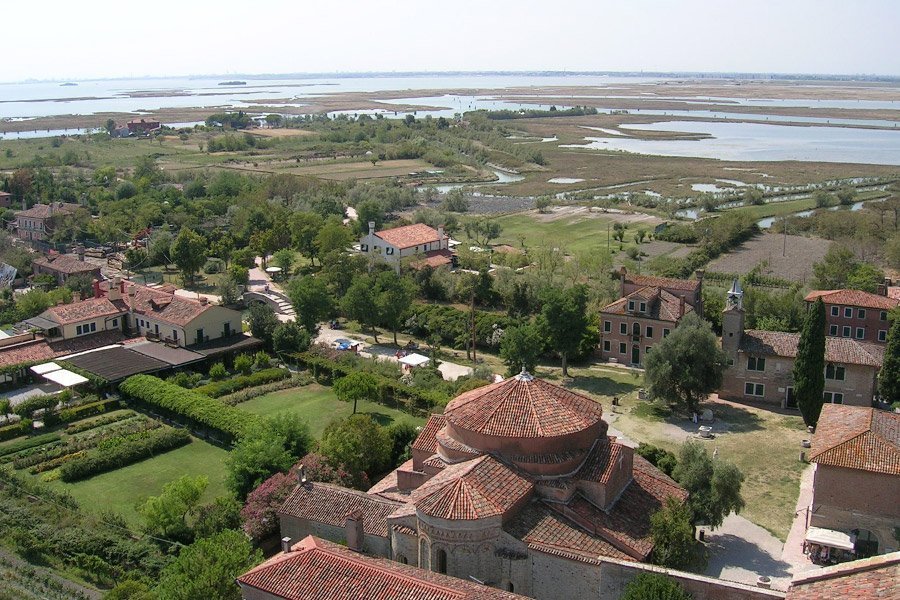
TORCELLO – Legend Number Four
Why did the ‘Ponte del Diavolo’ or ‘Bridge of the Devil‘ get its rather scary name? Firstly I have to explain a little background. For almost one thousand years Venice was an independent city state known as The Republic of Venice. During this period the Venetians dominated trade in the eastern Mediterranean. The Venetians were proud, resilient and fiercely independent people. Then in 1797 their long history of independence came to a brutal end when the Austrians invaded Northern Italy as part of Napoleon’s campaign to control the Italian peninsula. The Austrians seized Venice and that was the end of the Venetian Republic. The Venetians were furious, heart-broken and bereft.
Legend has it that a young Venetian girl fell in love with an Austrian soldier. Her family decided this romance could not, under any circumstances, be allowed to continue. The young girl was sent far away from Venice. Shortly afterwards the Austrian boy was assassinated, by an ‘unknown hand’. On hearing of his death the girl was allowed back to Venice. But her grief was so great that she refused to eat and fearing her death the family sought advice from a local wise woman (or witch). The witch came up with a plan. She suggested a meeting with the devil on the bridge at Torcello, at night, away from prying eyes. The young girl agreed and made her way to the bridge, which she climbed. She had a candle to guide her, and a gold coin in her hand. As soon as the devil saw her climbing the bridge, he spat out the ‘key of time’ thus releasing the Austrian boy from his deathly fate. In his greed the devil grabbed the gold coin. As the girl reached the top of the bridge, out of the darkness emerged her young lover walking towards her. Just as they were reunited at the top of the bridge, a gust of wind blew out the candle, and the two were lost in the darkness. Reunited and gone forever.
However the witch had promised the devil, a pure young soul, every year at Christmas, in exchange for the Austrian soldier. She didn’t carry out her part of the bargain and it is said that every Christmas Eve the devil appears on the bridge, in the form of a black cat, waiting to receive his payment. It’s hard to know if Legend Number Four is true or not. It’s got all the typical hallmarks of a European folk tale. Good and evil, dark and light, greed, romance and hope. Star-crossed lovers, a romance that cannot be. It’s all so familiar. In fact just about the same time that this story was being concocted (1790s), the Brothers Grimm travelled through Germany writing down traditional stories and folklore that had been passed from father to son and mother to daughter by word of mouth, as fireside tales, for generations. Their compilation of stories went on to become one of the definitive collections of children’s tales that we all know and love.
In a funny sort of way it doesn’t really matter whether these stories and legends are true or not. What matters is our engagement with a place. If a story captures our imagination and enables us to understand a little more about the past then that is a good thing. Next time I am on the island of Torcello, I’ll definitely be taking special notice of the ‘Ponte del Diavolo’ who knows I might even see the black cat!


Just a few steps beyond the ‘Ponte del Diavolo‘ is the seductive terrace of Locanda Cipriani, ideal for a perfect coffee. I always used to enjoy a quick peep at the small water colour painted by Winston Churchill hanging just inside the restaurant door. One day I’ll have lunch in this hallowed place. Up until now the pull of ‘Da Romano’ a fish restaurant on neighbouring Burano has been too strong. However, now it’s time to visit the Basilica and to gaze at a truly spectacular medieval mosaic.
BASILICA OF TORCELLO – a stone reality – not a legend
Less than five minutes further along the path is the Basilica of Santa Maria Assunta and next to it the older Romanesque church of Santa Fosca. The bell tower of Santa Maria Assunta dominates the northern end of the lagoon of Venice and can be seen for miles. Stepping inside the Church of Santa Maria is quite surprising. Externally the church is built of brick, it is unadorned and very simple. However, when I walk through the huge wooden doors into the apse I’m confronted by an enormous ‘Last Judgement’ mosaic that covers the back wall of the church. Created in the Byzantine style from the 11th century onwards, it is a glittering visual masterpiece made up of gold leaf, and tens of thousands of tiny mosaic pieces, each one about a centimetre square in size. Red, green and gold fills the air, countless tiny ‘tesserae‘ pieces of glass make up this vast, sparkling picture. The mosaic is very graphic. Christ sits in judgement, deciding who should go to heaven and who should go to hell. Individuals are being assigned an eternity in paradise or alternatively an eternity in hell. On the left hand side of the mosaic there are beautiful people, wandering around in a verdant garden. Palm trees thrive and angels convey a sense of goodness and virtue. It is all sweetness and light. Blue, green and gold colours soothe the eye. The colours are restful and serene.
IN COMPLETE CONTRAST – On the right hand side of the mosaic there is hell, drenched with blood red flames, contorted bodies, tortured figures and dismembered limbs. Worms crawl through eye sockets, hopeless souls stand submerged to the waist in red-hot blazing pyres. The message is crystal clear for the church-goers of the Middle Ages, live a good life and go to heaven. Live a mean, evil, greedy, sinful life and go to hell. The graphic and powerful nature of the mosaic always leaves me transfixed. I sit gazing at the tortured souls and the vibrant red and gold colours for what seems to be an eternity. When my kids were little and we came to Venice ‘en famille’ we always used to have a day out on the lagoon and Torcello was included. William, my second son, in particular was fascinated by the skulls and snakes in the ‘inferno’ part of the mosaic at the bottom right hand corner. The idea that evil people would finish their lives in hell, in a dismembered state, with worms crawling through skulls and broken bones littering a burning cavern is a powerful message to deliver to the living.
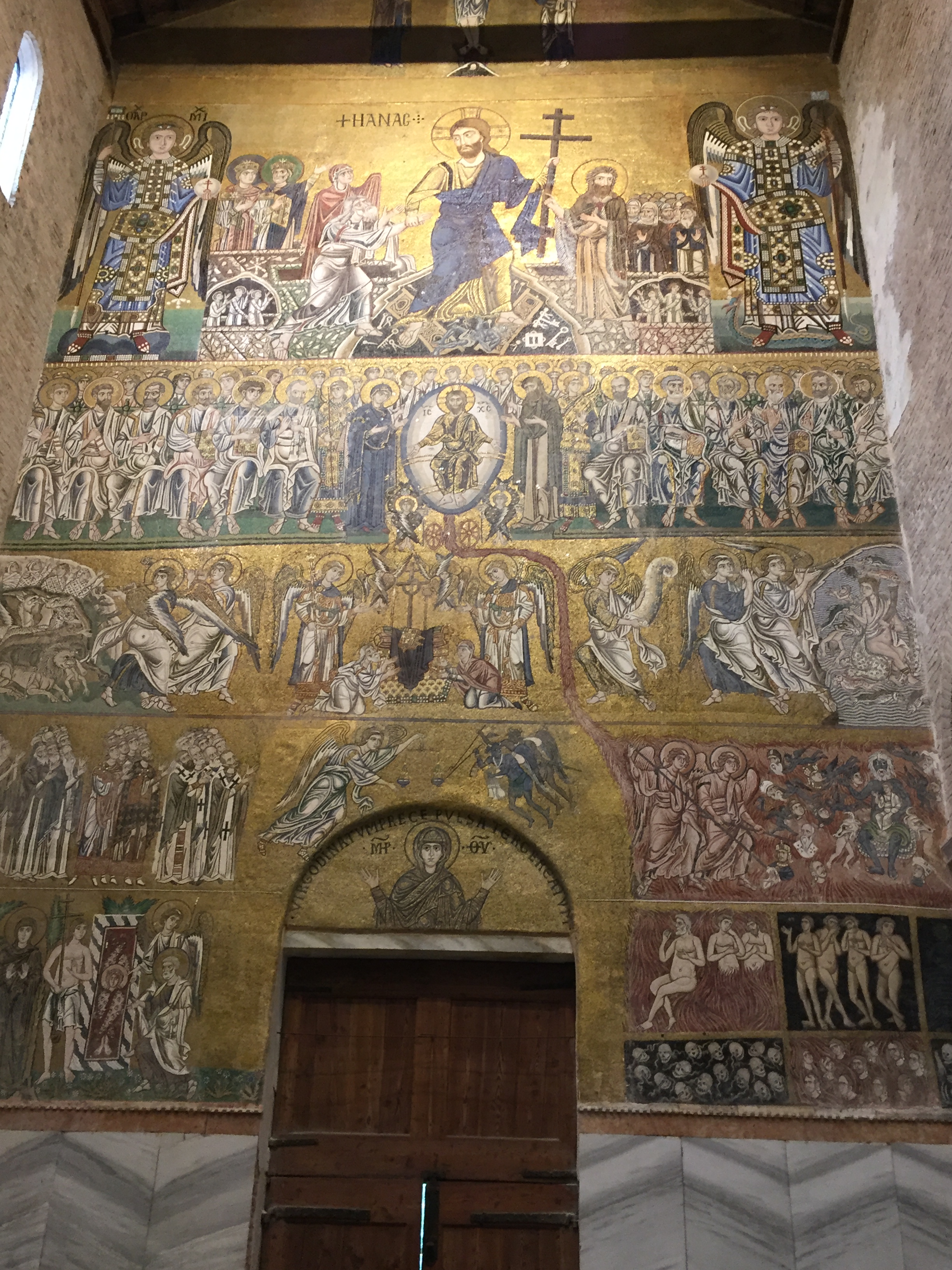
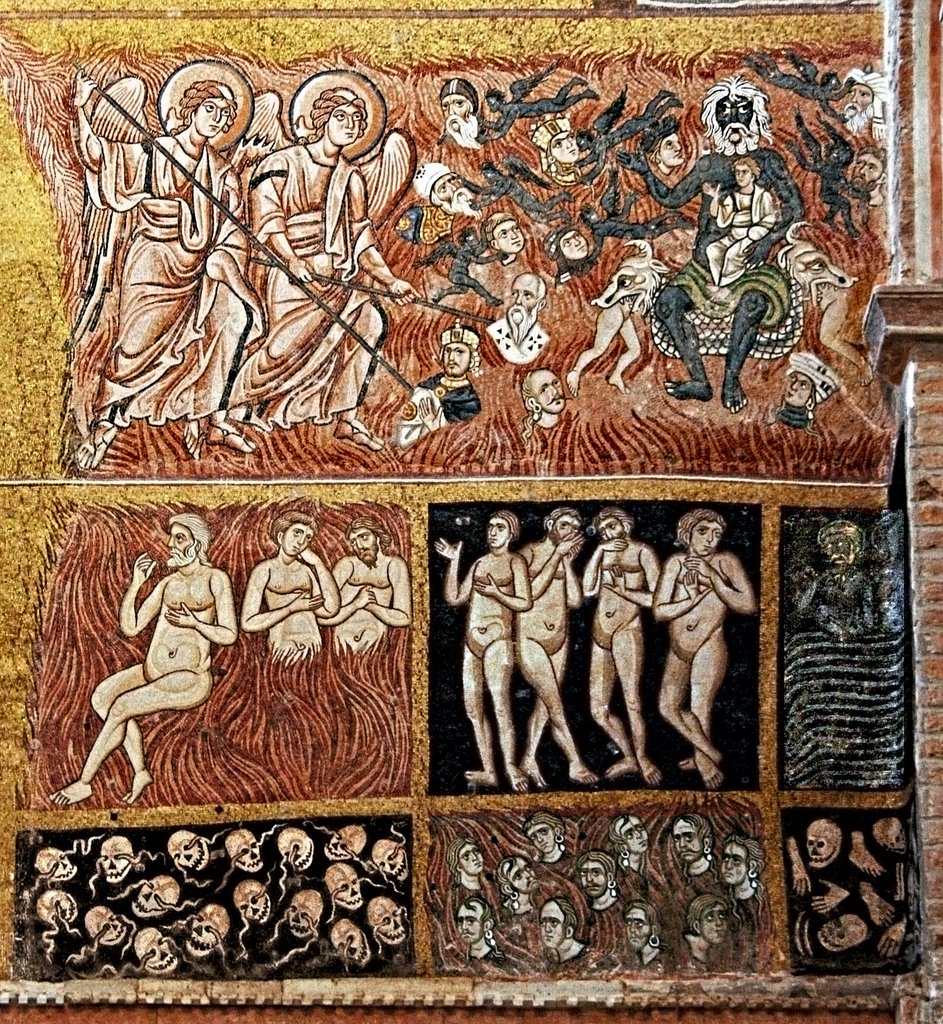
The Devil sits on a throne made of twisted serpents with Cerberus, the multi-headed vicious hound that guards the gates of hell at his side. The seven frames in the mosaic possibly refer to the seven circles of hell. Bodies dismembered, flames everywhere. The redness of blood or flames – either way it is compelling and terrifying. There’s no evidence to suggest that Dante saw this particular ‘Last Judgement’ mosaic, however his own version of hell, in his epic work ‘The Divine Comedy’ is remarkably similar. After half an hour of gazing at this fiendish work the need to get some fresh air can be quite overwhelming. Even though there’s more to see, the church has a superb, highly decorated mosaic floor and a very interesting wooden altar screen (recently restored), but the pull of lunch is just too strong…..
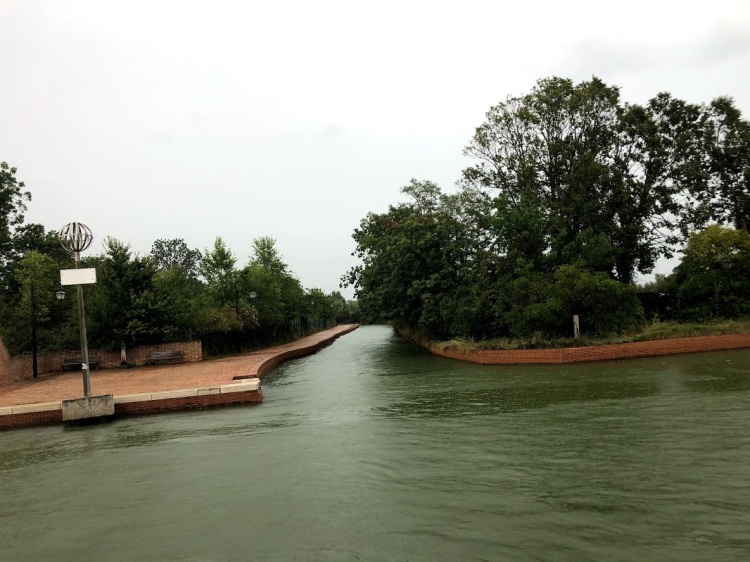
TORCELLO is a delightful confection of the real and the imagined. A combination of ancient fishing village, Roman outpost, and Byzantine art and mosaics. A place of exceptional peace, quiet and tranquillity. An isolated settlement in the Venetian lagoon, that in many ways was the fore-runner to the City of Venice. A place that has inspired visitors including Hemingway and Churchill. A place rich in legend, history and folklore. A place where a black cat frequents the ‘Ponte del Diavolo‘ each Christmas season. A warning to us all that you never know when you might run into an evil spirit and what the consequences of such a meeting might be. If you are still feeling brave just remember the fate of the ‘sinners’ in the Last Judgement on the back wall of the church. It’s definitely time now to get some fresh air and enjoy a delicious fish lunch courtesy of the bountiful Venetian Lagoon. Now’s the time to follow the ‘red brick road’……
Notes:
- To read more about Locanda Cipriani’s fascinating history – visit their beautiful and interesting web site: https://www.locandacipriani.com/
- I’d strongly recommend reading Hemingway’s novel ‘Across the river and into the trees’ written whilst he stayed at Locanda Cipriani in November 1948. The novel conveys the atmosphere and ambiance of the lagoon in the cold winter months.
- For a little more on Hemingway – here’s a short article I wrote about the grizzly old character that he was: Ernest Hemingway, Venetian Lagoon
- The idea of rich men and women who may have lived evil lives entering the kingdom of heaven was always a bit of a quandry – especially for medieval money lenders. Enrico Scrovegni was a case in point: Padova, Italy – How does a money lender get into the kingdom of heaven….
- For more on the Venetian Lagoon may I suggest an article I wrote a year or so ago about this unique and fascinating wetland: Venice – A day on the lagoon in Venice
- I’d also suggest a visit to neighbouring Burano especially Olga’s Lace Shop! My favourites: Burano,Venice, Italy – The kindness of women
- For unique, tailor-made travel to Italy my boutique travel company, www.grand-tourist.com offers a bespoke travel service, planning itineraries and delivering very quality itineraries and service.
- I couldn’t resist sharing a really good and informative food blog about Locanda Cipriani. Particularly the photo of ‘cannochie’ a type of Venetian large prawn or small crayfish. They are absolutely delicious. Elizabeth Minchilli’s blog on the food at Locanda Cipriani, Torcello
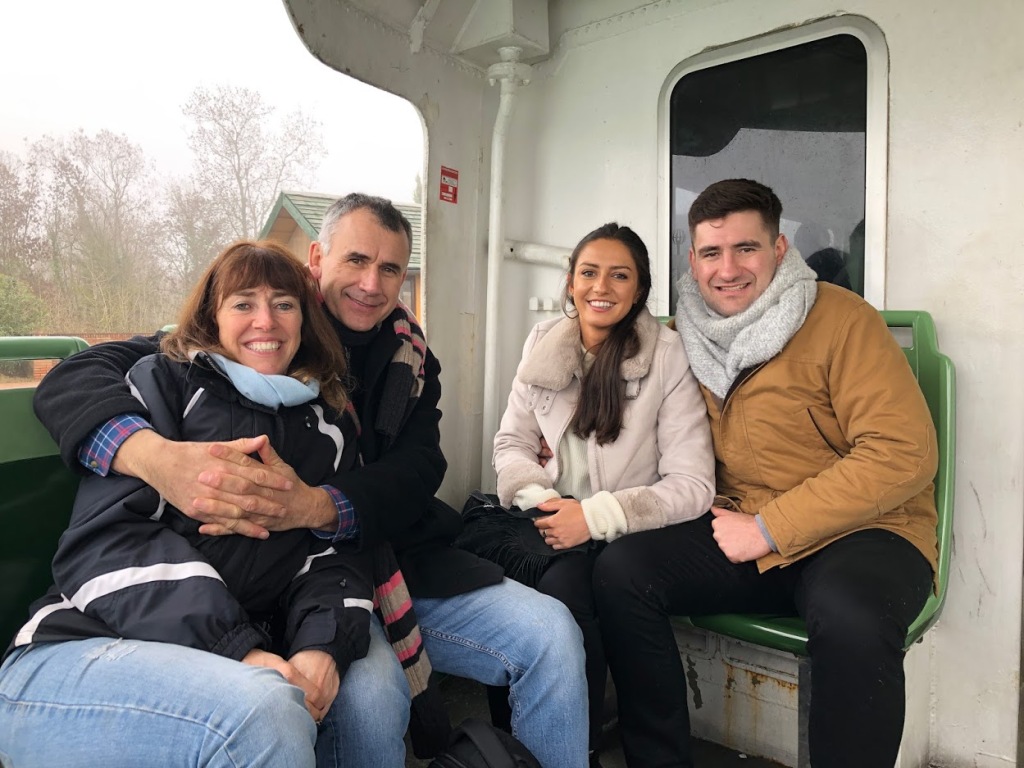
- Written: 08-06-2018
- Updated: 15-10-2019
- Updated: 02-09-2020
Happy Reading!
#grandtourist
#educatedtraveller






I remember the mural so well, Janet. Stared at it with awe and dread. I love the legends you write about here.
LikeLike
I remember the mural so well, Janet. Stared at it with awe and dread. I love the legends you write about here.
LikeLiked by 1 person
Well done, Janet – yet again, you have picked out a lesser known part of Italy- brought it to life in glorious technicolour (including a lovely video clip), whetted our desire to see more and learn more, and provided a fascinating and stimulating glimpse into the past: many thanks for a really interesting read!
LikeLiked by 1 person
Funnily enough John – I was thinking about you and Margaret. I know you’ve been to Venice but you’ve never experienced it with me!!!!!
LikeLike